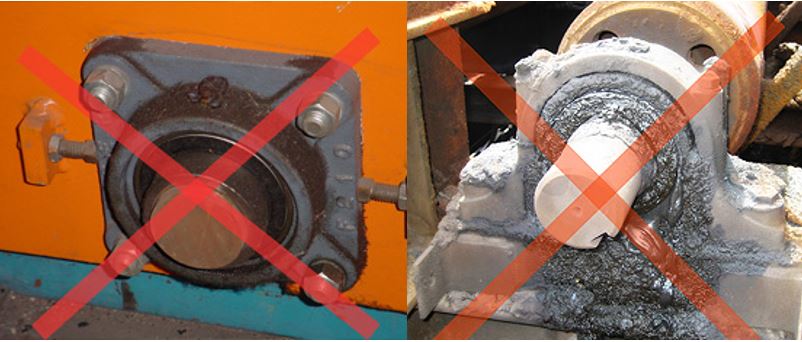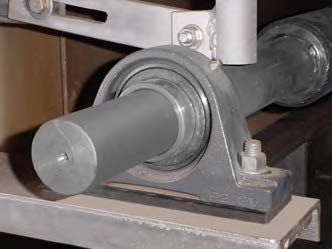
Airborne contaminants can cause severe problems for bearings. Contaminants can get caught up in the grease that often seeps out through the seals or shields. Bearing manufacturers come up with some pretty exotic seal designs to keep contaminants out of the bearing. A common downside to these seal designs is very high drag, and it almost seems that contaminants are drawn to the bearing…which may in fact be true!
As a bearing rotates the balls “plow” through the grease causing turbulence within the bearing. This turbulence will in turn cause the rubber seals to move in & out slightly as if the bearing is “breathing”. With shielded bearings, the turbulence is vented through the small space between the shield and the inner race. This “breathing” action can cause the smallest of airborne contaminants to be drawn toward the bearing and get “stuck” to the bearing where the grease has seeped through the seals, or get sucked into the shielded bearing through the gap. Once caught onto the seal of the bearing it’s just a matter of time before these contaminants get “wicked” into the interior of the bearing as it rotates. From there the contaminants act as abrasive fillers thickening the grease as they cause ware on the races and rolling elements.

CSL fills that gap between the races for the width of the bearing. The turbulence caused by the balls “plowing” through grease doesn’t exist anymore. In addition, with the standard CSL there is no “stickiness” to hold any contaminants that touch the bearing. That doesn’t mean contaminants can never get into the bearing, just that it is less likely since the contaminants have to be small enough to fit into the tiny gap between the CSL and the bearing’s races. In most cases, any contaminants that happen to get into a bearing processed with CSL can by flushed out using solvents without compromising the lubricating properties of CSL.

